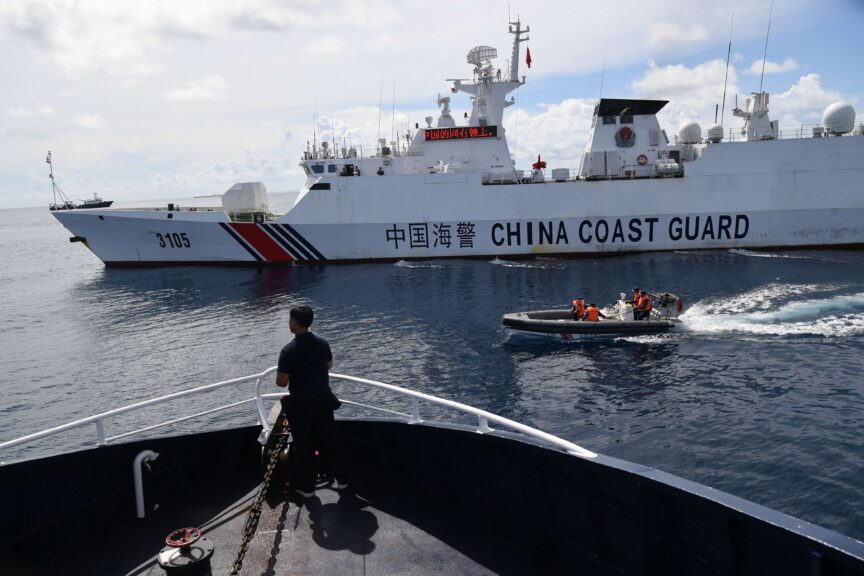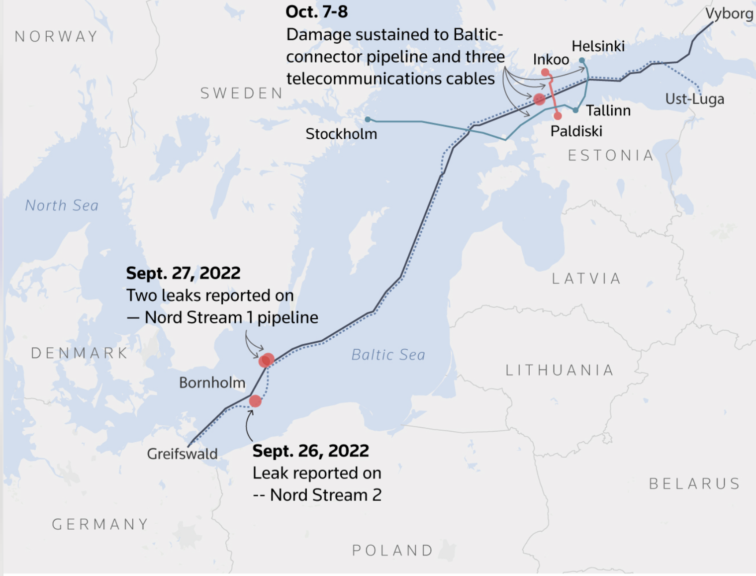
Recently, the CCP has engaged in a string of dangerous and war-like provocations. In the South China Sea, Beijing has been escalating tensions with the Philippines. The CCP’s reckless acts aren’t accidental. They are calculated moves to test the United States and its allies to identify the weakest link for the CCP to plan for future military operations.
These incidents allow Beijing to observe the responses from the United States and its allies, determine their resolve in defending Taiwan, and engage in a form of psychological warfare.
Less than 10 days after Australia’s pro-China Prime Minister Anthony Albanese made a historical visit to Beijing in early November, a Chinese Navy destroyer closed in on a disabled Australian frigate in international waters and used active sonar to harass divers who were conducting underwater repairs. This caused the sailors injuries. However, the Australian government didn’t condemn the PLA’s aggression and issued a statement saying:
“The Australian Government has expressed its serious concerns to the Chinese Government following an unsafe and unprofessional interaction with a People’s Liberation Army-Navy destroyer.”
Forbes magazine said: “Rather than deal directly with the crisis, the Australian government buried the news, leaving Anthony Albanese to emerge from his otherwise fruitful international junket looking dangerously weak and out of touch.” However, to the CCP, how the Australian government handled the incident provided valuable insight in assessing Albanese’s resolve in confronting the CCP.
In October, a Chinese fishing boat from HK was accused of dragging an anchor and damaging a critical gas pipeline in the Baltic Sea that connects two NATO countries, Finland and Estonia. It also damaged two telecom cables connecting Estonia to Finland and Sweden.

Finland’s Minister of European Affairs Anders Adlercreutz said it’s hard to believe that sabotage to the undersea gas pipeline happened without Beijing’s knowledge. He said “I’m not the sea captain. But I’d think that you’d notice that you’re dragging an anchor behind you for hundreds of kilometers…I think everything indicates it was intentional.” Beijing denied the allegation and called for an “objective, fair and professional” investigation. It is testing the Europeans, and observing the responses from different countries.
The Biden Administration has been enhancing partnerships and building security cooperation alliances in the Pacific. From the CCP’s perspective, bilateral or multilateral security agreements are only diplomatic maneuvers on paper. They don’t necessarily equate to the leader’s resolve in a real military confrontation. CCP wants to test its opponents.
In February, a Chinese vessel used “military-grade lasers” on the Philippine Coast Guard vessel, temporarily blinding the crew. The vessel was resupplying troops stationed at Second Thomas Shoal. The CCP’s foreign ministry said its Marine Police Bureau carried out the operation “in accordance with the law.”
On Aug. 5, Chinese Coast Guards fired water cannons at a Philippine boat that delivered supplies to troops on the Sierra Madre warship grounded on the Second Thomas Shoal in the Spratly Islands. In October, during a Philippine operation to resupply the grounded warship, a Chinese Coast Guard vessel collided with a Philippine resupply boat after attempting to block it. A Chinese Maritime Militia also bumped a Philippine Coast Guard patrol vessel during the mission.
U.S. allies have condemned the Chinese behavior in the South China Sea. These include Australia, Japan, Canada, the United Kingdom and the European Union. On December 2, France and the Philippines signed a letter of intent in Manila to promote bilateral defense cooperation. The Philippines has also signed similar agreements with the United States and Australia.
On the following day, a record 135 Chinese maritime militia vessels swarmed the area near Whitsun Reef. The day after, the USS Giffords traveled through the waters near the Second Thomas Shoal in the Spratly Islands, and Beijing protested.
The series of events were to give the United States a stress test. The CCP cannot test the United States in the Taiwan Strait. This is because once the CCP does something to Taiwan and a war breaks out, Beijing doesn’t have the option of pulling back. It either wins or loses and cannot control the outcome. But in the South China Sea, the CCP has more control.
We know that the Philippines has a common security treaty with the US. If the CCP were to launch an offensive against the Philippines, the U.S. would intervene. The South China Sea therefore is a good testing ground for Beijing to gauge Washington’s determination. If the friction with the Philippines escalates into a military confrontation and the U.S. responds decisively, Beijing can pull back and blame the U.S. for overreacting. But such an option doesn’t exist in the Taiwan Strait. Therefore, the South China Sea has become a good testing ground.
On December 4, a pro-CCP media in Hong Kong, HK01, published an article spelling out the CCP’s goal. The article compared the current situation to 2013 when the Philippines and Vietnam both challenged China in the region and claimed that China’s military strength in the South China Sea had increased dramatically, and its control had improved and isn’t what it used to be. It acknowledged that the increased tensions may lead to confrontation with the U.S.
“The PLA’s frequent monitoring of U.S. warships in the “neighboring waters” of the relevant islands and reefs is a symbol of its ability to deal with the U.S. military. The greater the chance of direct encounters between the military forces of China and the United States, the greater the likelihood of conflict, but this also precisely illustrates the problem, the South China Sea game is ultimately a problem between China and the United States.”
The article’s title explicitly explained Beijing’s goal. “In the South China Sea, the most important thing is to break the blind faith in the U.S. military capability. The Philippines is not to be feared.” It further elaborated the idea.
“China may teach the Philippines a lesson or two, but the Philippines is absolutely not the main agenda for China. In the past, the military, political, and diplomatic support from the U.S. provided the backbone for certain countries to be provocative. Whether the U.S. military will support its allies in the disputed waters in the future will be the geopolitical weather vane. The most important task for China is to break the blind faith that these countries have in the U.S. military capability.
The article also mentioned President Marcos Jr’s speech in Hawaii on November 20 after the APEC meeting in which he said the Philippines has taken the initiative to contact Vietnam, Malaysia and other countries in the hope of exploring the possibility of reaching a “Code of Conduct in the South China Sea” at the bilateral level.
The Chinese article said, “This negotiation, which excludes China, may lead to further intensification of the dispute in the South China Sea.” The Chinese don’t believe the Philippines has the capability to lead the regional countries because it also has maritime disputes with other nations. The Chinese media claimed that Vietnam and Malaysia’s relationships with China are stable, and the two countries don’t intend to challenge China in the South China Sea.
Some experts say the CCP’s series of provocations is also a form of psychological warfare. Similar to wolf warrior diplomacy, the goal is to intimidate the opponents and force them to accept CCP’s aggression as normal behavior. To some extent, it has worked in Australia because the Albanese government didn’t fight back. The CCP has used threats and intimidation against Taiwan for a long time and affected some people. There is a group of Taiwanese who adamantly believe that Taiwan should avoid war with the mainland at all costs, including making concessions and compromises with the CCP.
Watch Lei’s full video here:







